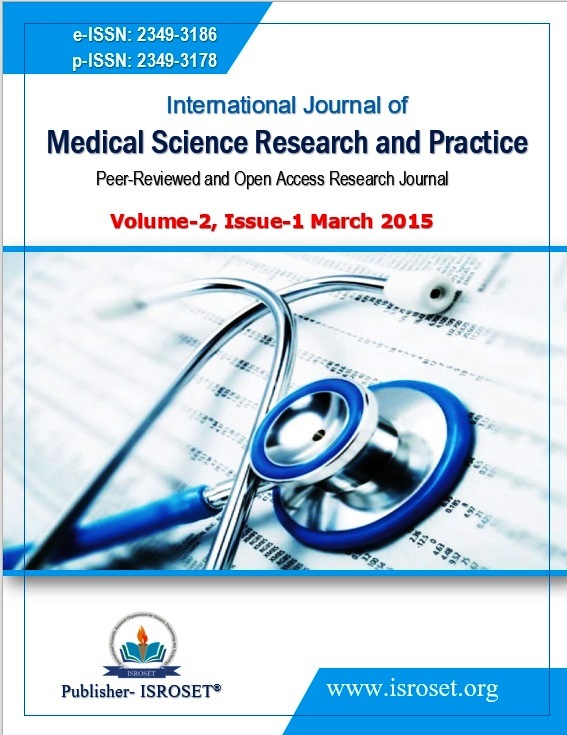To find out the diabetic risk in study population by subjecting them to Indian diabetic risk scale (IRDS)
Keywords:
Diabetes mellitus, Diabetic Risk Group, Indian Diabetic Risk ScoreAbstract
Background- Diabetes as a non-communicable disease is significant public health problem the prevalence rate all the world over is raising. Diabetes mellitus is one of the leading cause of long term complications and a major health hazard in a developing country like India. Indian Diabetes Risk Score (IRDS) developed by Dr. Mohan and his colleagues in 2005 is one of the strongest predictor of incident diabetes in India.
Material Methods- The present study entitled was conducted in the department of Physiology Gandhi Medical College and Associated Hamidia Hospital, Bhopal. 120 subjects in the age group range of 30-60 years attending the different medical OPDs.
Results- The mean age of the sixty subjects included in the control group was 42.61±8.70 years and sixty Prediabetic subjects were 45.43±8.77 years. Maximum numbers of Prediabetes were in the age group of 40 - 50 years.
Conclusion- The results of the study will help to formulate strategies for future preventive efforts and delay the onset of type 2 diabetes.
References
Lal S. Textbook of Community Medicine by Sunder lal. 2nd ed. New Delhi: CBS Publishers and Distributors; 2009.
Wild S, Roglic G, Green A, Sicree R, King H. Global prevalence of diabetes: estimates for the year 2000 and projections for 2030. Diabetes Care 2004;27:1047-53.
Mohan V, Deepa R, Deepa M, Somannavar S, Datta M. A simplifi ed Indian Diabetes Risk Score for screening for undiagnosed diabetic subjects. J Assoc Physicians India 2005;53:759-63.
Mohan V, Sandeep S, Deepa M, Gokulakrishnan K, Datta M, Deepa R. A diabetes risk score helps identify metabolic syndrome and cardiovascular risk in Indians - the Chennai Urban Rural Epidemiology Study (CURES-38). Diabetes Obes Metab 2007;9:337-43.
American diabetes association (ADA) Clinical Practice Recommendations. Position Statement. Diabetes Care 2007;S46:30.
Unwin N, Shaw J, Zimmet P, Alberti KG. Impaired glucose tolerance and impaired fasting glycaemia: the current status on defi nition and intervention. Diabet Med 2002;19:708-23.
Diabetes Atlas. 3rd ed. International diabetes federation (2006). Available from: http://www/eatlas/idf.org/index 2983-html. [Last accessed 2014 Dec 25].
Connelly PW, Zinman B, Maguire GF, Mamakeesick M, Harris SB, Hegele RA, et al. Association of the novel cardiovascular risk factors paraoxonase 1 and cystatin C in type 2 diabetes. J Lipid Res 2009;50:1216-22.
Nichols GA, Brown JB. Higher medical care costs accompany impaired fasting glucose. Diabetes Care 2005;28:2223-9.
Zhang Q, Wang Y, Huang ES. Changes in racial/ethnic disparities in the prevalence of Type 2 diabetes by obesity level among US adults. Ethn Health 2009;14:439-57.
Knowler WC, Barrett-Connor E, Fowler SE, Hamman RF, Lachin JM, Walker EA, et al. Reduction in the incidence of Type 2 diabetes with lifestyle
Downloads
Published
How to Cite
Issue
Section
License

This work is licensed under a Creative Commons Attribution 4.0 International License.
Authors contributing to this journal agree to publish their articles under the Creative Commons Attribution 4.0 International License, allowing third parties to share their work (copy, distribute, transmit) and to adapt it, under the condition that the authors are given credit and that in the event of reuse or distribution, the terms of this license are made clear.






